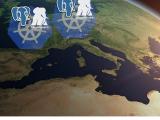CloudNativePG Recipe 9 - Inspecting the network and the storage in a CloudNativePG cluster
In this blog post, I delve into the crucial aspects of networking and storage within a CloudNativePG cluster deployed on Kubernetes. I explore how Kubernetes services manage external and internal communications for PostgreSQL clusters, ensuring high availability and seamless failover. Additionally, I examine the role of PersistentVolumeClaims in handling PostgreSQL data storage, offering insights into effective resource management. This article provides an example of the kind of knowledge DBAs need to acquire when managing PostgreSQL in cloud-native environments, highlighting the importance of collaboration with infrastructure teams and developers to ensure robust and resilient cluster operations.









